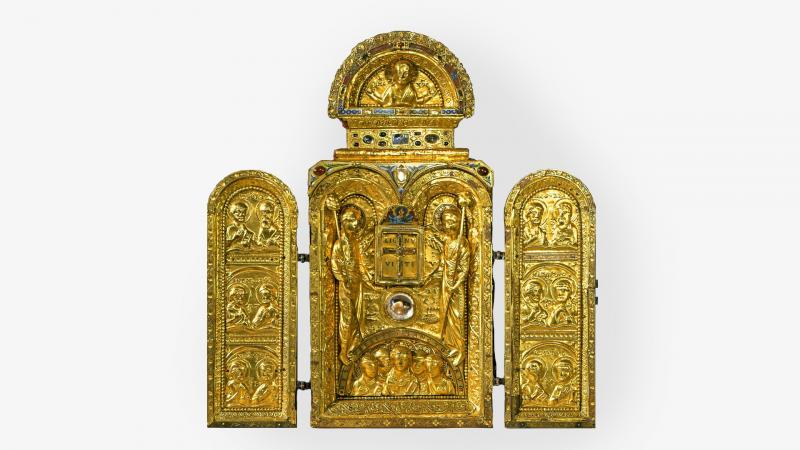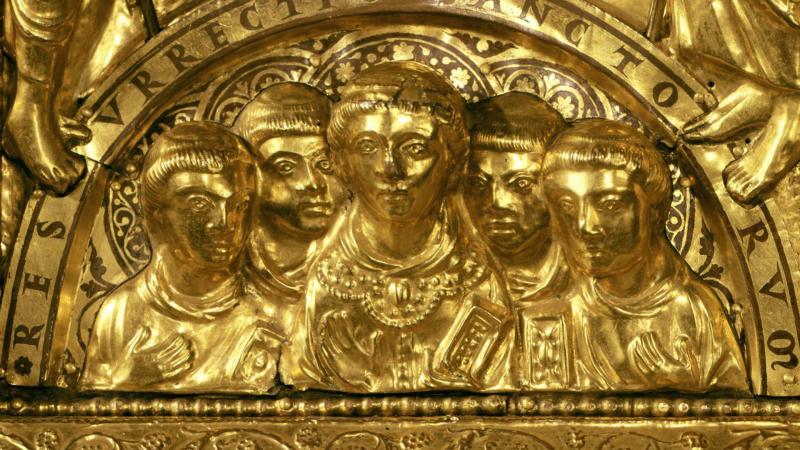In 1006, Emperor Henry II offered relics of the True Cross at the Sainte-Croix collegiate church in Liège, which was founded in 979 AD by Notger.
At the time, these fragments were arranged into a small gold cross. Protected by a window, and accompanied by the inscription LIGNV VITE (Tree of Life), it has been housed in the middle of a triptych since the 1160s; the iconography of this triptych, which is underpinned by the idea of the Redemption, is organised around this receptacle. This is supported by the two allegories about virtues of Truth and Judgement, holding the staff of hyssop and, formerly, the spear. These figures are part of two arcades, which were designed to match the shape of the closed side shutters. Five select halos emerge from a cavity placed under an arch, accompanied by the inscription RESVRRECTIO SANCTORUM (the Resurrection of Saints).
The space is occupied by the instruments of the Passion – crown, nails, vinegar bucket – with the words VERITAS (Truth) and IVDICIVM (Judgement) arranged between them. Protected by a rock crystal, an oculus contains relics of Saint John the Baptist and Saint Vincent. The allegory of Mercy (MISERICORDIA) is represented in the champlevé enamel placed atop the cross. This attitude is reflected in that of Christ, who is surrounded by the Greek letters Alpha and Omega, which are inscribed in the upper tympanum. The shutters bear the half-length representation of the twelve apostles.
Unlike other Mosan triptychs, this one is distinguished by the economy of its chromaticism: the coloured notes are reserved mainly for the Misericordia enamel, whose presence is only more significant, and in the image of Christ, due to the fact that it is surrounded by a series of small enamelled plaques.
The iconography is a function of the axial presence of the relic. The Tree of Life, and the wood of the Cross, appears as the instrument of Redemption, in which the figure of Christ and those of the Elect participate. The paths leading to Salvation are evoked through the allegories of virtues found in the same position in a triptych in the Cloisters Museum in New York.
Stylistically, this work belongs to a large production that is generally attributed to the goldsmith Godefroid de Huy. In fact, it bring works where careful examination reveals the involvement of several hands, if not several workshops together under the same label. Nevertheless, the stylistic kinship between the virtues of the triptych and the angels on the roof of Saint Mengold's shrine – it is strongly assumed that it is by the goldsmith Godefroid – is so close that they can be attributed to same artist. We know that the latter passed away in Neumoustier Abbey in Huy around 1174.

